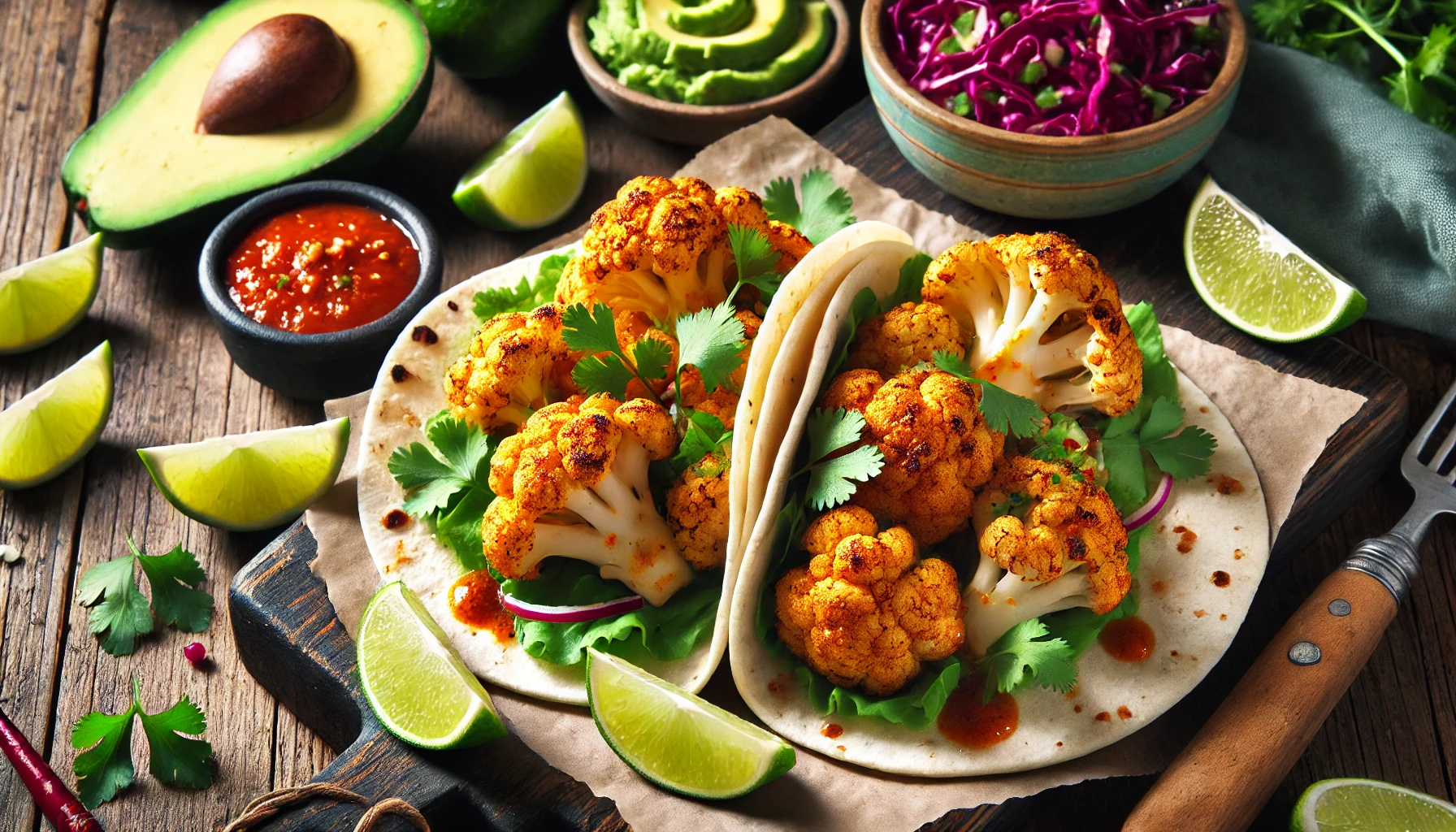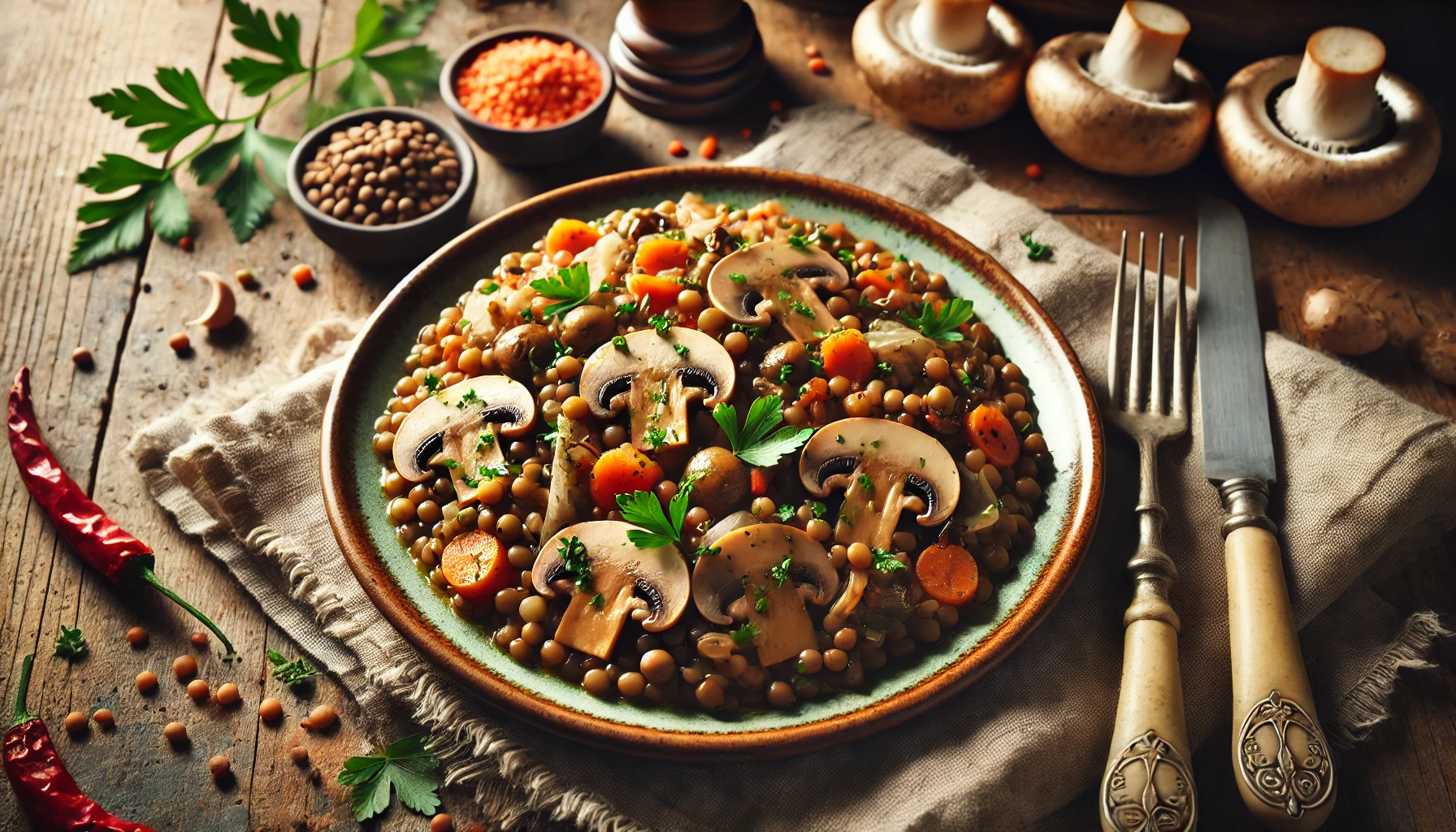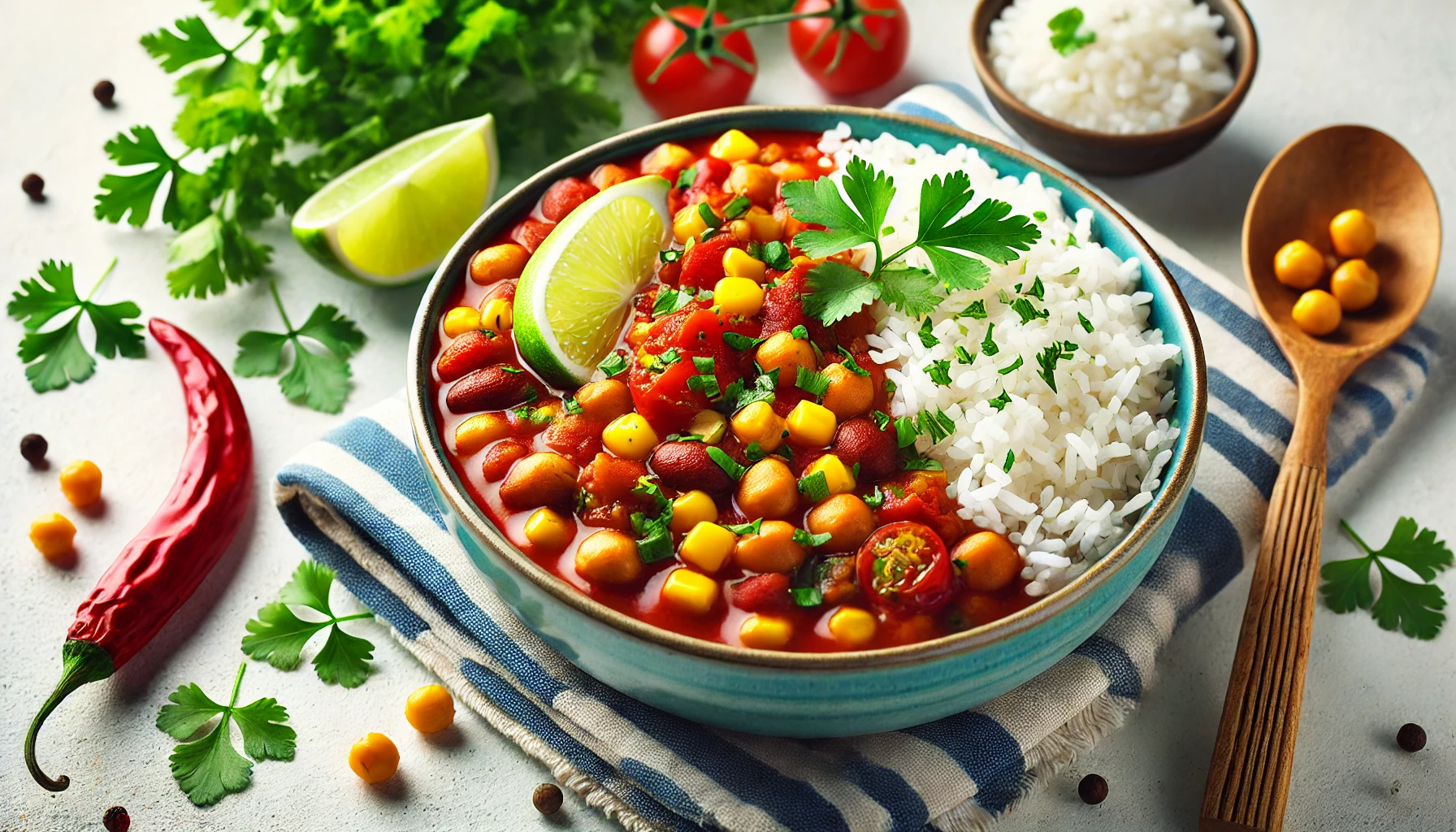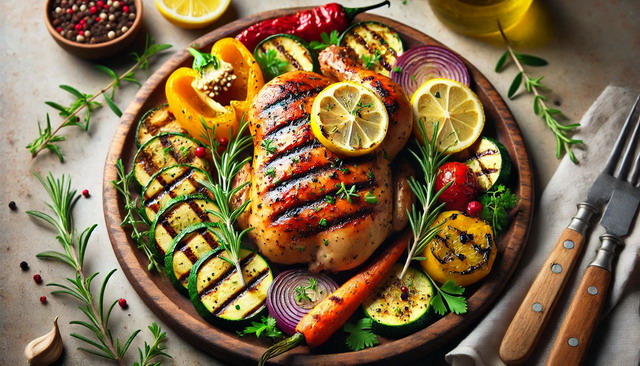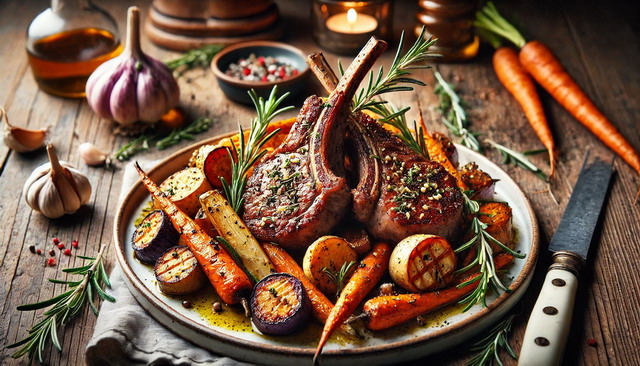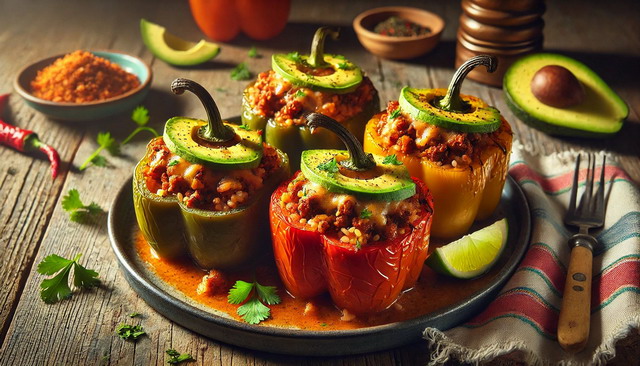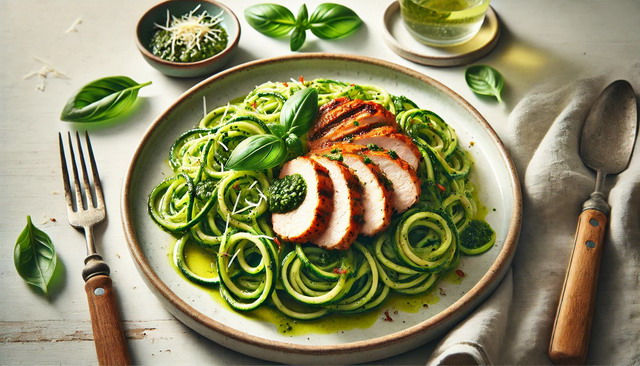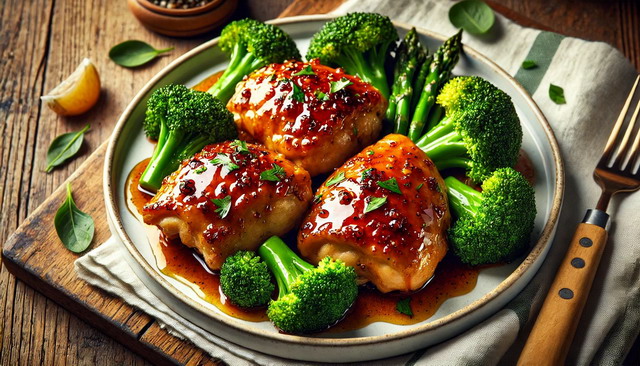Cooking at home can sometimes feel like a routine task, but certain dishes have the power to transform an ordinary meal into an extraordinary experience. One such dish is the Crispy Skin Duck Breast with Sautéed Spinach. It’s a culinary masterpiece that not only tantalizes the taste buds but also impresses with its sophisticated presentation. In this blog post, we’ll explore what makes this dish so special, provide a step-by-step guide to cooking it perfectly, and share some insider tips on selecting the right pan to achieve that irresistible crispy skin.
1. What Makes Crispy Skin Duck Breast a Culinary Masterpiece?
The allure of duck breast lies in its unique combination of rich, tender meat and perfectly crisped skin. Unlike chicken or turkey, duck meat has a higher fat content, which contributes to its juicy texture and robust flavor. When cooked correctly, the fat renders out, leaving behind a layer of golden-brown, crispy skin that is nothing short of divine. But what exactly makes this dish a culinary masterpiece?
Firstly, it’s the contrast of textures that makes crispy skin duck breast so appealing. The crunch of the skin against the succulent meat creates a sensory experience that is both satisfying and luxurious. The fat beneath the skin not only bastes the meat as it cooks but also infuses it with a depth of flavor that is unparalleled by other poultry.
Secondly, duck breast is incredibly versatile. It pairs beautifully with a variety of sides and sauces, from sweet and fruity to savory and spicy. This versatility allows home chefs to experiment with different flavor profiles, making each preparation of duck breast a unique experience.
Finally, the presentation of a well-cooked duck breast is something to behold. The glistening, crispy skin and the perfectly cooked pink interior create a visual appeal that is sure to impress. Whether you’re cooking for yourself or hosting a dinner party, crispy skin duck breast is a dish that stands out both on the plate and on the palate.
2. The Best Duck Breast Recipes for Home Chefs
For many home chefs, the idea of cooking duck breast can be intimidating. However, with the right recipe and technique, it’s entirely possible to achieve restaurant-quality results in your own kitchen. Let’s explore some of the best duck breast recipes that can turn any meal into a gourmet experience.
One classic approach is Duck à l’Orange, a French dish that pairs the rich meat with a sweet and tangy orange sauce. This recipe is perfect for special occasions, as the citrusy sauce complements the savory flavors of the duck without overpowering them.
For those who prefer a simpler preparation, a Seared Duck Breast with Balsamic Glaze offers a quick yet elegant option. The balsamic reduction, combined with a hint of honey, creates a sweet and savory sauce that enhances the natural flavors of the duck.
Another excellent recipe is Asian-style Crispy Duck Breast, where the meat is marinated in soy sauce, ginger, and garlic before being seared to perfection. This dish is often served with a side of stir-fried vegetables or steamed rice, making it a well-rounded and satisfying meal.
But perhaps the most beloved recipe among home chefs is the Crispy Skin Duck Breast with Sautéed Spinach. This dish is a testament to the beauty of simplicity. The richness of the duck is perfectly balanced by the earthy, slightly bitter taste of sautéed spinach. The flavors marry together harmoniously, making it a dish that’s not only delicious but also easy to prepare.
3. Step-by-Step Guide: How to Cook Duck Breast with Crispy Skin
Achieving perfectly crispy skin on a duck breast may seem like a daunting task, but with the right technique, it’s easier than you might think. Here’s a step-by-step guide to help you cook duck breast with crispy skin that rivals any fine dining restaurant.
Step 1: Preparing the Duck Breast
Start by scoring the skin of the duck breast. Use a sharp knife to make shallow cuts in a crisscross pattern, being careful not to cut into the meat. This step is crucial as it allows the fat to render out during cooking, resulting in a crispy exterior.
Next, season the duck breast generously with salt and pepper. You can also add other seasonings like garlic powder, thyme, or paprika to enhance the flavor.
Step 2: Cooking the Duck Breast
Place the duck breast skin-side down in a cold, dry pan. This might seem counterintuitive, but starting with a cold pan allows the fat to render out slowly, ensuring the skin becomes crispy without burning.
Turn the heat to medium and cook the duck breast for about 6-8 minutes, or until the skin is golden brown and crispy. During this time, you can tilt the pan and spoon out excess fat, which can be saved for roasting vegetables or making confit.
Once the skin is crispy, flip the duck breast and cook for another 3-4 minutes on the meat side. For a perfect medium-rare, the internal temperature should reach about 135°F (57°C).
Step 3: Resting and Serving the Duck Breast
After cooking, let the duck breast rest for 5 minutes. This allows the juices to redistribute, ensuring the meat is tender and juicy. Slice the duck breast thinly and serve it atop a bed of sautéed spinach.
Cooking Tips:
- Don’t rush the process. Cooking the duck breast slowly allows the fat to render properly, resulting in crispier skin.
- Use a meat thermometer to ensure your duck breast is cooked to the desired doneness.
By following these steps, you’ll be able to serve up a crispy skin duck breast that’s not only delicious but also a true work of culinary art. Whether you’re a seasoned cook or a novice in the kitchen, this dish is sure to impress.
4. Choosing the Right Pan for Perfectly Crispy Duck Skin
Achieving the perfect crispy skin on a duck breast is as much about the cooking method as it is about the cookware you choose. The right pan can make all the difference between a beautifully seared, crispy-skinned duck and a disappointing, soggy result. But what exactly should you be looking for in a pan?
The Importance of a Heavy-Bottomed Pan
When it comes to cooking duck breast, a heavy-bottomed pan is your best friend. These pans, typically made from materials like cast iron or stainless steel, distribute heat evenly across the cooking surface. This even heat distribution is crucial for rendering the fat from the duck skin slowly and evenly, which is the key to achieving that sought-after crispiness.
A heavy-bottomed pan also retains heat well, which helps maintain a consistent cooking temperature. This is particularly important when cooking duck, as fluctuating temperatures can lead to uneven cooking, with some parts of the skin becoming overly crisp while others remain soft and unappetizing.
Non-Stick vs. Stainless Steel
While non-stick pans have their place in the kitchen, they’re not the best choice for searing duck breast. Non-stick surfaces don’t allow for the same level of browning and crisping as stainless steel or cast iron. The Maillard reaction, which is responsible for the delicious browning on the skin, occurs more effectively on a stainless steel surface.
That said, if you’re concerned about the duck breast sticking to the pan, make sure the pan is properly preheated before adding the duck. Also, avoid moving the duck breast around in the pan too soon; allow the skin to sear and release naturally from the surface.
Cast Iron: A Top Choice
If you have a cast iron skillet, this is perhaps the best option for cooking duck breast. Cast iron not only provides excellent heat retention and distribution, but it also adds a certain richness to the flavor of the duck through the seasoning that builds up on the pan over time.
Additionally, cast iron pans can go from stovetop to oven, making them ideal for finishing the duck breast in the oven after searing, if you prefer a slightly more cooked interior while maintaining a crispy exterior.
In conclusion, the best pan for cooking crispy skin duck breast is a heavy-bottomed, stainless steel or cast iron skillet. With the right pan, you’ll be well on your way to culinary success.
5. The Health Benefits of Eating Duck Breast
Duck breast is not only a luxurious and flavorful choice for a meal, but it also offers several health benefits that might surprise you. Often considered an indulgence, duck meat actually boasts a nutritional profile that can complement a healthy diet when consumed in moderation.
Rich in High-Quality Protein
One of the primary benefits of duck breast is its high protein content. Protein is essential for building and repairing tissues, supporting immune function, and maintaining muscle mass. A 3.5-ounce serving of duck breast contains approximately 19 grams of protein, making it a valuable source of this macronutrient.
Unlike some other protein sources, duck breast provides all nine essential amino acids, making it a complete protein. This is particularly beneficial for those who engage in regular physical activity or strength training, as it aids in muscle recovery and growth.
A Source of Healthy Fats
While duck breast is known for its higher fat content compared to chicken or turkey, it’s important to note that not all fats are created equal. Duck fat is predominantly composed of monounsaturated and polyunsaturated fats, which are considered heart-healthy fats.
Monounsaturated fats, in particular, have been shown to help reduce bad LDL cholesterol levels and increase good HDL cholesterol levels, contributing to overall heart health. Moreover, duck fat has a higher smoke point compared to many other fats, making it a stable choice for cooking at higher temperatures without breaking down into harmful compounds.
Vitamins and Minerals
Duck breast is also a good source of several essential vitamins and minerals. It’s rich in B vitamins, particularly niacin (B3), which plays a role in energy production and supports skin health. Additionally, duck meat provides significant amounts of selenium, an antioxidant that helps protect cells from damage and supports thyroid function.
Iron is another key mineral found in duck breast. Iron is crucial for the production of hemoglobin, which carries oxygen in the blood. This makes duck a great choice for those who need to boost their iron intake, such as individuals with anemia or women of childbearing age.
Balancing Indulgence with Moderation
While duck breast offers several health benefits, it’s still important to consume it in moderation due to its fat content. Pairing it with lighter sides, such as sautéed spinach or roasted vegetables, can help balance the meal and keep it within a healthy range.
In summary, duck breast is a nutrient-dense food that provides high-quality protein, healthy fats, and essential vitamins and minerals. When enjoyed as part of a balanced diet, it can be both a delicious and nutritious addition to your meals.
6. Sautéed Spinach: The Perfect Side Dish for Duck Breast
When it comes to pairing sides with a rich and flavorful dish like crispy skin duck breast, sautéed spinach emerges as a clear winner. This simple yet nutritious side dish complements the richness of the duck without overwhelming it, offering a balance of flavors and textures that elevate the entire meal.
Why Spinach Works So Well with Duck
The earthiness of spinach provides a perfect contrast to the savory, umami flavors of the duck breast. Spinach has a slightly bitter undertone that cuts through the richness of the duck, cleansing the palate and enhancing the overall dining experience.
Additionally, the natural vibrancy of spinach adds a visual appeal to the plate, creating a beautiful color contrast with the golden brown duck breast. This makes the dish not only taste great but also look stunning when served.
Nutritional Benefits of Spinach
Spinach is a nutritional powerhouse, packed with vitamins, minerals, and antioxidants. It’s an excellent source of vitamin K, which is important for bone health and blood clotting. Spinach is also rich in vitamin A, which supports vision and immune function, and vitamin C, which is an antioxidant that helps protect cells from damage.
Moreover, spinach provides a good amount of dietary fiber, which aids in digestion and helps maintain a healthy gut. The fiber content in spinach also contributes to a feeling of fullness, making it a satisfying side dish that can help balance the meal.
How to Sauté Spinach Perfectly
Sautéing spinach is quick and easy, making it an ideal side dish for a weeknight dinner or a special occasion. Here’s a simple method to sauté spinach to perfection:
- Heat the Pan: Start by heating a large skillet over medium heat. Add a tablespoon of olive oil or duck fat (reserved from cooking the duck breast) to the pan.
- Add Garlic: Once the oil is hot, add a couple of minced garlic cloves. Sauté the garlic for about 30 seconds, or until it becomes fragrant but not browned.
- Cook the Spinach: Add fresh spinach leaves to the pan, filling it up. Don’t worry if it seems like too much; spinach wilts down significantly as it cooks. Use tongs or a spatula to toss the spinach in the garlic and oil, ensuring it cooks evenly.
- Season and Serve: Once the spinach is wilted and tender, usually in about 2-3 minutes, season it with a pinch of salt and pepper. You can also add a squeeze of lemon juice for a touch of brightness. Serve the sautéed spinach alongside your crispy skin duck breast.
By pairing crispy skin duck breast with sautéed spinach, you create a well-balanced and visually appealing meal that’s as nutritious as it is delicious. Whether you’re cooking for a special occasion or simply want to enjoy a gourmet meal at home, this combination is sure to impress.
7. Pairing Wine with Crispy Duck Breast and Sautéed Spinach
A gourmet meal like crispy skin duck breast with sautéed spinach deserves an equally refined wine pairing. The richness of the duck, combined with the earthiness of the spinach, calls for a wine that can complement and enhance the dish’s complex flavors. Choosing the right wine can elevate your dining experience from excellent to extraordinary.
Red Wine Pairings
Duck, with its rich and robust flavor, is often best paired with red wine. The key is to select a wine that has enough body to stand up to the duck without overpowering it.
- Pinot Noir: Perhaps the most classic pairing for duck, Pinot Noir’s light to medium body, and bright acidity make it an ideal match. The wine’s cherry and berry notes complement the duck’s rich flavors, while its earthy undertones harmonize beautifully with the sautéed spinach.
- Merlot: For those who prefer a fuller-bodied red, Merlot is an excellent choice. Its smooth, velvety texture and flavors of plum, black cherry, and cocoa create a rich backdrop that enhances the duck’s savory qualities without overwhelming the dish.
- Zinfandel: If you’re in the mood for something a bit bolder, Zinfandel offers a robust flavor profile with jammy fruit notes and a touch of spice. This wine pairs particularly well if your duck breast is served with a sweet glaze or sauce, as the wine’s fruity character complements those flavors.
White Wine Pairings
While red wines are the go-to choice for duck, certain white wines can also pair beautifully with this dish, particularly when the duck is accompanied by lighter sides like sautéed spinach.
- Chardonnay: A well-oaked Chardonnay can work wonders with duck breast, especially if you’re looking for a wine with enough richness to match the duck’s fat. The wine’s buttery texture and flavors of apple, pear, and vanilla provide a delightful contrast to the savory meat.
- Riesling: For a different approach, consider a dry or off-dry Riesling. Its high acidity and notes of citrus and stone fruits can cut through the richness of the duck while adding a refreshing element to the meal. Riesling is especially good if your duck breast is prepared with a sweet or fruity sauce.
Sparkling Wine Pairings
For those who want to add a touch of celebration to their meal, sparkling wine is a fantastic option. The bubbles and acidity in sparkling wines provide a refreshing counterbalance to the richness of the duck.
- Champagne: A classic Champagne, with its bright acidity and fine bubbles, can cleanse the palate between bites, making it a great pairing for duck breast. The minerality and citrus notes of Champagne work well with the flavors of both the duck and the sautéed spinach.
- Prosecco: If you prefer something lighter and a bit sweeter, Prosecco offers a fruit-forward profile with hints of apple, pear, and citrus. Its effervescence adds a playful element to the meal, making it a delightful pairing option.
In summary, whether you prefer red, white, or sparkling wine, there’s a perfect pairing for your crispy skin duck breast with sautéed spinach. The key is to choose a wine that complements the dish’s rich and earthy flavors while enhancing your overall dining experience.
8. Tips for Serving Crispy Skin Duck Breast with Sautéed Spinach
Once you’ve mastered the art of cooking crispy skin duck breast and perfectly sautéed spinach, the next step is to present your dish in a way that highlights its gourmet qualities. Presentation isn’t just about making the dish look good—it’s also about enhancing the dining experience. Here are some tips to help you serve your crispy skin duck breast with sautéed spinach like a professional chef.
Plating for Visual Appeal
The visual presentation of your dish is the first thing your guests will notice, so it’s important to plate your food in a way that’s both attractive and appetizing.
- Layering: Start by creating a base with the sautéed spinach on each plate. The spinach’s deep green color provides a beautiful contrast to the golden-brown duck breast, making the dish visually striking. Lay the duck slices neatly on top of the spinach, slightly overlapping them to showcase the crispy skin.
- Garnishing: Garnishes can add both color and flavor to your dish. Consider topping the duck breast with a sprinkle of finely chopped herbs, such as parsley or chives, to add a pop of green and a hint of freshness. For a touch of brightness, add a few thin slices of orange or lemon, or a drizzle of balsamic reduction around the plate.
- Balance and Symmetry: When arranging your plate, aim for balance and symmetry. Place the duck breast slightly off-center and arrange the spinach in a way that complements the shape and size of the meat. Avoid overcrowding the plate; instead, give each element space to stand out.
Serving Temperature
Serving your dish at the correct temperature is crucial for maintaining the textures and flavors you worked so hard to achieve.
- Warm Plates: Before plating, warm your plates in the oven at a low temperature. This ensures that the duck breast and spinach stay warm longer, allowing your guests to enjoy the dish at its optimal temperature.
- Resting the Duck: As mentioned earlier, it’s essential to let the duck breast rest after cooking. This not only allows the juices to redistribute within the meat but also helps maintain the crispy texture of the skin when served.
Timing is Everything
When serving a dish like crispy skin duck breast with sautéed spinach, timing is key to ensuring everything is cooked to perfection and served at the right moment.
- Sautéing Spinach Last: Since spinach wilts quickly, sauté it just before you’re ready to serve. This ensures that it’s tender and vibrant when it hits the plate.
- Coordinating Sides: If you’re serving additional sides, make sure they’re ready to go when the duck is finished resting. This way, everything can be plated and served together, keeping all components of the dish fresh and hot.
Final Touches
The little details can make a big difference in how your dish is perceived.
- Drizzle Sauces with Precision: If you’re serving the duck breast with a sauce, use a spoon or squeeze bottle to drizzle it artfully on the plate. Avoid drowning the dish in sauce; instead, aim for a few strategic lines or dots that enhance the presentation.
- Consider the Ambiance: Finally, consider the setting in which you’re serving your meal. Soft lighting, a well-set table, and the right choice of background music can all contribute to the overall dining experience, making your crispy skin duck breast with sautéed spinach feel like a true gourmet affair.
By following these tips, you’ll not only cook a delicious meal but also present it in a way that delights both the eyes and the palate.
9. Common Mistakes to Avoid When Cooking Duck Breast
Cooking duck breast can be a rewarding experience, but it’s not without its challenges. To ensure your duck breast turns out perfectly crispy and flavorful, it’s important to avoid some common pitfalls that can lead to disappointing results. Here are some mistakes to watch out for, along with tips on how to avoid them.
1. Cooking with Cold Duck Breast
One of the most common mistakes is cooking duck breast straight from the refrigerator. Cold meat doesn’t cook evenly, which can lead to overcooked edges and an undercooked center.
- Tip: Always allow your duck breast to come to room temperature before cooking. This typically takes about 20-30 minutes. This step ensures that the meat cooks evenly throughout, resulting in a perfectly tender and juicy duck breast.
2. Not Scoring the Skin Properly
Scoring the skin of the duck breast is essential for rendering the fat and achieving that crispy texture. However, many home cooks either skip this step or don’t score deeply enough, resulting in a layer of unrendered fat beneath the skin.
- Tip: Use a sharp knife to score the skin in a crisscross pattern, making sure to cut through the fat but not into the meat. This allows the fat to render out effectively during cooking, leaving you with a thin, crispy layer of skin.
3. Using the Wrong Heat Level
Another mistake is cooking duck breast on too high or too low a heat. High heat can cause the skin to burn before the fat has a chance to render, while low heat might result in soggy skin.
- Tip: Start with a cold pan and gradually bring the heat up to medium. This slow and steady approach allows the fat to render slowly, giving you crispy skin without burning it. Once the skin is crispy, you can briefly increase the heat to finish cooking the meat side of the breast.
4. Overcooking the Duck Breast
Duck breast is best enjoyed medium-rare to medium, with a slight pink center. Overcooking the duck can result in dry, tough meat that lacks the juiciness and flavor that makes this dish so special.
- Tip: Use a meat thermometer to monitor the internal temperature of the duck breast. Aim for 135°F (57°C) for medium-rare or 145°F (63°C) for medium. Remember that the meat will continue to cook slightly as it rests, so it’s better to err on the side of undercooking than overcooking.
5. Neglecting to Rest the Meat
Cutting into the duck breast immediately after cooking is a common mistake that can lead to dry meat. Resting allows the juices to redistribute throughout the meat, ensuring each bite is tender and flavorful.
- Tip: After cooking, let the duck breast rest for 5-10 minutes before slicing. This simple step makes a big difference in the final texture and juiciness of the meat.
6. Discarding the Rendered Duck Fat
Rendered duck fat is a valuable byproduct of cooking duck breast, but many people make the mistake of discarding it. This flavorful fat can be used to enhance other dishes, from roasted potatoes to sautéed vegetables.
- Tip: Save the rendered duck fat in a glass jar and refrigerate it for future use. It adds incredible flavor to a variety of dishes and can elevate your cooking to new heights.
By avoiding these common mistakes, you’ll be well on your way to mastering the art of cooking crispy skin duck breast. With practice and attention to detail, you can create a dish that’s not only delicious but also a true testament to your culinary skills.
10. Why Duck Breast is a Restaurant Favorite: A Chef’s Perspective
Duck breast has long been a favorite on restaurant menus, and for good reason. It’s a dish that embodies the essence of gourmet dining—rich in flavor, luxurious in texture, and visually stunning on the plate. But what exactly makes duck breast such a popular choice among chefs? Let’s take a closer look from a chef’s perspective.
Flavor Complexity
One of the main reasons chefs love cooking duck breast is its complex flavor profile. Unlike other poultry, duck has a rich, gamey flavor that can stand up to bold seasonings and sauces. This versatility allows chefs to experiment with a wide range of flavor combinations, from sweet and fruity to savory and spicy.
Duck breast is also a meat that absorbs marinades and spices exceptionally well, making it a canvas for creativity in the kitchen. Whether it’s paired with a classic orange sauce or a modern fusion glaze, duck breast always manages to shine.
Culinary Technique
Cooking duck breast requires a certain level of skill and technique, which is another reason it’s a favorite among chefs. The challenge of rendering the fat to achieve crispy skin while keeping the meat juicy and tender is one that many chefs relish. It’s a dish that allows them to showcase their culinary prowess and attention to detail.
In many restaurants, duck breast is also a dish that’s often prepared à la minute, meaning it’s cooked to order. This requires precise timing and coordination in the kitchen, making it a dish that chefs can take pride in when executed flawlessly.
Visual Appeal
Presentation is a key aspect of fine dining, and duck breast offers a visually appealing element that elevates any dish. The contrast between the golden, crispy skin and the pink, tender meat creates a striking visual on the plate. When paired with colorful sides and artful plating, duck breast becomes a true centerpiece of the meal.
For chefs, the ability to create a visually stunning dish is just as important as the taste. Duck breast, with its natural beauty and elegant appearance, provides the perfect opportunity to impress diners both visually and gastronomically.
A Symbol of Luxury
Duck breast has long been associated with luxury and indulgence, making it a go-to choice for special occasions and high-end dining experiences. For chefs, serving duck breast is a way to offer diners something special—an experience that goes beyond just eating a meal.
The luxurious nature of duck breast also allows chefs to justify higher price points on their menus, which can be beneficial for restaurant profitability. It’s a dish that diners are often willing to splurge on, especially when it’s prepared with the care and expertise that only a professional kitchen can provide.
In summary, duck breast is a restaurant favorite because it embodies the qualities that make dining out special: rich flavors, culinary technique, visual appeal, and a sense of luxury. For chefs, it’s a dish that allows them to showcase their skills and creativity, making it a standout choice on any menu.
Delicious Turkey and Spinach Stuffed Portobello Mushrooms Recipe
11. Enhancing the Flavor: Marinades and Sauces for Duck Breast
One of the most exciting aspects of cooking duck breast is the opportunity to experiment with marinades and sauces that enhance its natural flavor. Duck breast’s rich, savory profile pairs beautifully with a variety of ingredients, allowing you to create dishes that are both complex and delicious. Here are some marinades and sauces that can take your duck breast to the next level.
Classic Orange Sauce
Perhaps the most iconic pairing for duck breast is a classic orange sauce. This French-inspired sauce, known as “sauce à l’orange,” balances the rich, gamey flavor of the duck with the bright, sweet, and tangy notes of orange.
Ingredients:
- Fresh orange juice
- Zest of one orange
- Sugar
- White wine vinegar
- Duck or chicken stock
- Butter
Method:
- Start by caramelizing sugar in a saucepan until it reaches a deep amber color.
- Deglaze with white wine vinegar, then add fresh orange juice and zest.
- Reduce the mixture until it thickens slightly, then add duck or chicken stock.
- Simmer the sauce until it reaches a syrupy consistency, and finish by whisking in cold butter for a rich, glossy finish.
Balsamic Reduction
For a more modern take, a balsamic reduction offers a sweet and tangy contrast to the savory duck breast. The deep, complex flavors of aged balsamic vinegar complement the richness of the duck, while the slight sweetness enhances its natural flavors.
Ingredients:
- Aged balsamic vinegar
- Honey or brown sugar (optional)
Method:
- In a small saucepan, bring balsamic vinegar to a simmer over medium heat.
- Reduce the vinegar by half until it becomes thick and syrupy.
- For added sweetness, stir in a small amount of honey or brown sugar.
- Drizzle the reduction over the duck breast just before serving.
Asian-Inspired Marinade
For a different flavor profile, try an Asian-inspired marinade that incorporates soy sauce, ginger, garlic, and sesame oil. This marinade infuses the duck with umami and a subtle spiciness, creating a dish that’s both flavorful and aromatic.
Ingredients:
- Soy sauce
- Fresh ginger, grated
- Garlic, minced
- Sesame oil
- Rice vinegar
- Honey
Method:
- Combine all the ingredients in a bowl and mix well.
- Marinate the duck breast in the mixture for at least 30 minutes, or up to a few hours for a stronger flavor.
- Remove the duck breast from the marinade, pat dry, and cook as usual, reserving the marinade to use as a glaze during cooking.
Cherry-Port Sauce
For a touch of elegance, a cherry-port sauce offers a luxurious complement to duck breast. The deep, fruity flavors of cherries combined with the richness of port wine create a sauce that’s both sweet and savory, perfect for special occasions.
Ingredients:
- Fresh or frozen cherries, pitted
- Port wine
- Shallots, minced
- Chicken or duck stock
- Butter
Method:
- Sauté shallots in butter until softened.
- Add cherries and port wine, bringing the mixture to a simmer.
- Reduce until the liquid is thick and syrupy, then add chicken or duck stock.
- Continue to simmer until the sauce reaches your desired consistency, finishing with a knob of butter for richness.
These marinades and sauces offer a range of flavors that can enhance the natural richness of duck breast, allowing you to create a dish that’s both complex and deeply satisfying. Whether you prefer the bright citrus notes of a classic orange sauce or the bold, umami flavors of an Asian marinade, there’s a flavor combination here that’s sure to impress.
Fat-Free Low Sodium Chicken Broth: A Healthy and Delicious Option
12. Sourcing High-Quality Duck Breast: What to Look For
When it comes to cooking duck breast, the quality of the meat is just as important as the cooking technique. Sourcing high-quality duck breast ensures that your dish will have the best possible flavor and texture. Here’s what to look for when selecting duck breast for your next gourmet meal.
Fresh vs. Frozen
One of the first decisions you’ll need to make is whether to purchase fresh or frozen duck breast. While fresh duck breast is often preferred for its superior flavor and texture, frozen duck breast can be just as good if it’s properly thawed and cooked.
- Fresh Duck Breast: When buying fresh duck breast, look for meat that is firm to the touch and has a clean, slightly sweet smell. The skin should be pale and free of blemishes, with a thin layer of fat underneath. Fresh duck breast is usually available at specialty butcher shops or high-end grocery stores.
- Frozen Duck Breast: If you opt for frozen duck breast, make sure to thaw it slowly in the refrigerator for 24-48 hours before cooking. Avoid thawing duck breast at room temperature or in the microwave, as this can lead to uneven thawing and potential bacterial growth.
Farm-Raised vs. Wild Duck
Another important consideration is whether to choose farm-raised or wild duck. Each has its own unique characteristics, and the choice will depend on your personal preferences and the specific dish you’re preparing.
- Farm-Raised Duck: Most duck breast available in stores is farm-raised, which means the ducks have been raised in controlled environments with a consistent diet. Farm-raised duck breast tends to be larger, fattier, and more tender than wild duck. The flavor is milder, making it a versatile option for a variety of recipes.
- Wild Duck: Wild duck, on the other hand, has a stronger, more gamey flavor and a leaner texture. Because wild ducks are more active, their meat is firmer and less fatty. Wild duck breast is best suited for dishes where the gamey flavor can shine, and it often pairs well with robust marinades and sauces.
Organic and Free-Range Options
For those who prioritize sustainability and animal welfare, organic and free-range duck breast is an excellent choice. Organic duck breast comes from ducks that have been raised without the use of antibiotics or hormones, and they are often fed an organic diet.
Free-range ducks are allowed to roam outdoors, which can result in meat with a richer flavor and firmer texture. While organic and free-range duck breast can be more expensive, many home chefs find that the superior quality and ethical considerations are worth the investment.
Local and Specialty Suppliers
For the freshest and highest quality duck breast, consider sourcing your meat from local or specialty suppliers. Many small farms and artisanal producers offer duck breast that is raised with care and attention to detail, resulting in a product that is far superior to mass-produced options.
Visiting farmers’ markets or connecting with local butchers can help you find duck breast that is fresh, ethically raised, and full of flavor. Additionally, some specialty suppliers offer heritage breeds of duck, which can provide a unique and flavorful alternative to standard varieties.
In conclusion, sourcing high-quality duck breast involves considering factors such as freshness, farming practices, and the specific type of duck. By selecting the best possible product, you set the stage for a delicious and memorable meal that highlights the rich flavors and luxurious texture of duck breast.
13. Crispy Skin Duck Breast with Sautéed Spinach: A Dish for Special Occasions
There are certain dishes that are perfect for celebrating life’s special moments, and crispy skin duck breast with sautéed spinach is one of them. This dish, with its rich flavors and elegant presentation, is ideal for those times when you want to impress your guests or simply indulge in something extraordinary. Let’s explore why this dish is perfect for special occasions and how you can make it the centerpiece of your next celebration.
A Show-Stopping Presentation
One of the key reasons this dish is perfect for special occasions is its show-stopping presentation. The golden, crispy skin of the duck breast, combined with the vibrant green of the sautéed spinach, creates a visually stunning plate that is sure to impress.
When hosting a dinner party or a celebratory meal, presentation is just as important as flavor. This dish offers both in abundance, making it a natural choice for when you want to wow your guests.
Rich, Decadent Flavors
The flavor profile of crispy skin duck breast with sautéed spinach is both rich and decadent, making it a luxurious choice for special occasions. The combination of the succulent duck breast and the earthy spinach creates a harmonious balance of flavors that is both satisfying and indulgent.
For celebrations, it’s important to choose dishes that feel special and out of the ordinary. Duck breast, with its bold flavors and luxurious texture, fits the bill perfectly. Pair it with a fine wine and you have a meal that’s worthy of any special event.
Scaling the Recipe for Larger Gatherings
While crispy skin duck breast with sautéed spinach is often prepared as an intimate meal for two or four, it’s also possible to scale the recipe for larger gatherings. By carefully timing the cooking process and using a few simple techniques, you can serve this dish to a larger group without sacrificing quality.
- Prepping in Advance: Many components of this dish can be prepped in advance, including scoring and seasoning the duck breast, and blanching the spinach. This allows you to focus on cooking and plating when your guests arrive.
- Multiple Pans: If you’re cooking for a larger group, consider using multiple pans to sear the duck breasts simultaneously. This ensures that each piece is cooked to perfection and served hot.
- Family-Style Serving: For a more casual gathering, consider serving the duck breast and sautéed spinach family-style. Slice the duck breasts and arrange them on a large platter with the spinach on the side, allowing guests to serve themselves. This approach not only makes serving easier but also adds a convivial atmosphere to the meal.
A Memorable Culinary Experience
Ultimately, crispy skin duck breast with sautéed spinach is more than just a dish—it’s a memorable culinary experience. Whether you’re celebrating a birthday, anniversary, or simply the joy of good food, this dish provides the perfect combination of flavor, presentation, and indulgence.
By taking the time to prepare this dish with care and attention to detail, you create a meal that will be remembered long after the last bite is taken. It’s the kind of dish that turns a dinner into a celebration, making it the perfect choice for any special occasion.
Conclusion
Crispy skin duck breast with sautéed spinach is a dish that embodies the essence of gourmet dining. From the rich flavors and luxurious texture of the duck breast to the simple elegance of sautéed spinach, every element of this dish is designed to delight the senses. Whether you’re cooking for a special occasion or simply want to elevate your weeknight dinner, this dish offers a culinary experience that is both satisfying and memorable.
With the right technique, high-quality ingredients, and a few thoughtful touches, you can create a meal that rivals any fine dining restaurant. So the next time you’re looking to impress your guests—or just yourself—reach for this recipe and enjoy the indulgence of crispy skin duck breast with sautéed spinach.
Freshly Squeezed Lemon Juice and the Paleo Diet: A Perfect Pair
FAQs: Crispy Skin Duck Breast with Sautéed Spinach
- What’s the best way to achieve crispy skin on duck breast?
To achieve perfectly crispy skin, start by scoring the skin in a crisscross pattern, being careful not to cut into the meat. Cook the duck breast skin-side down in a cold, dry pan over medium heat. This allows the fat to render out slowly, resulting in crispy skin. Make sure the duck breast is at room temperature before cooking, and avoid overcrowding the pan.
- How do I know when the duck breast is cooked to the right temperature?
For a perfect medium-rare duck breast, the internal temperature should reach 135°F (57°C). For medium, aim for 145°F (63°C). Use a meat thermometer to ensure accuracy. Remember that the duck will continue to cook slightly as it rests, so it’s best to remove it from the heat a few degrees below your target temperature.
- Can I prepare duck breast ahead of time?
Yes, you can prepare certain aspects of the duck breast ahead of time. You can score and season the duck breast up to 24 hours in advance, storing it in the refrigerator. However, it’s best to cook the duck breast just before serving to ensure the skin stays crispy and the meat remains juicy.
- What type of pan should I use to cook duck breast?
A heavy-bottomed pan, such as a cast iron or stainless steel skillet, is ideal for cooking duck breast. These pans distribute heat evenly, allowing the fat to render slowly and the skin to crisp up perfectly. Avoid using non-stick pans, as they don’t provide the same level of browning and crisping.
- How do I store leftover duck breast?
Leftover duck breast should be cooled to room temperature, then stored in an airtight container in the refrigerator for up to 3 days. To reheat, place the duck breast in a preheated oven at 300°F (150°C) for about 10-15 minutes, or until warmed through. Avoid using the microwave, as it can make the skin soggy.
- Can I freeze cooked duck breast?
Yes, cooked duck breast can be frozen. Allow it to cool completely, then wrap it tightly in plastic wrap or aluminum foil and place it in a freezer-safe container. It can be stored in the freezer for up to 2 months. To reheat, thaw in the refrigerator overnight and then warm it in the oven at 300°F (150°C) until heated through.
- What’s the best wine pairing for crispy skin duck breast?
Crispy skin duck breast pairs beautifully with a variety of wines. For red wine, Pinot Noir is a classic choice, offering bright acidity and berry notes that complement the duck. For white wine lovers, a well-oaked Chardonnay provides a rich, buttery backdrop. Sparkling wines, such as Champagne, are also an excellent option, providing a refreshing counterbalance to the richness of the duck.
- How do I sauté spinach without it becoming too watery?
To sauté spinach without it becoming watery, make sure to cook it quickly over medium-high heat in a hot pan with a little oil or butter. Stir constantly until the spinach is just wilted, which usually takes only a couple of minutes. Avoid overcooking, as this can release too much water from the spinach.
- What can I do with the rendered duck fat?
Rendered duck fat is a culinary treasure that can be used in a variety of ways. It’s perfect for roasting vegetables, especially potatoes, which take on a rich, crispy texture. You can also use it to sauté other vegetables, make confit, or even use it in baking for added flavor. Store rendered duck fat in a glass jar in the refrigerator, where it will keep for several weeks.
- Can I serve crispy skin duck breast with sides other than sautéed spinach?
Absolutely! While sautéed spinach is a classic pairing, crispy skin duck breast also pairs well with a variety of sides. Consider serving it with roasted root vegetables, a mixed green salad, wild rice, or even a fruit-based compote like cherry or apple. The key is to choose sides that complement the rich flavor of the duck without overpowering it.

